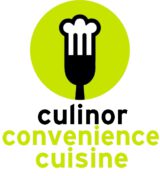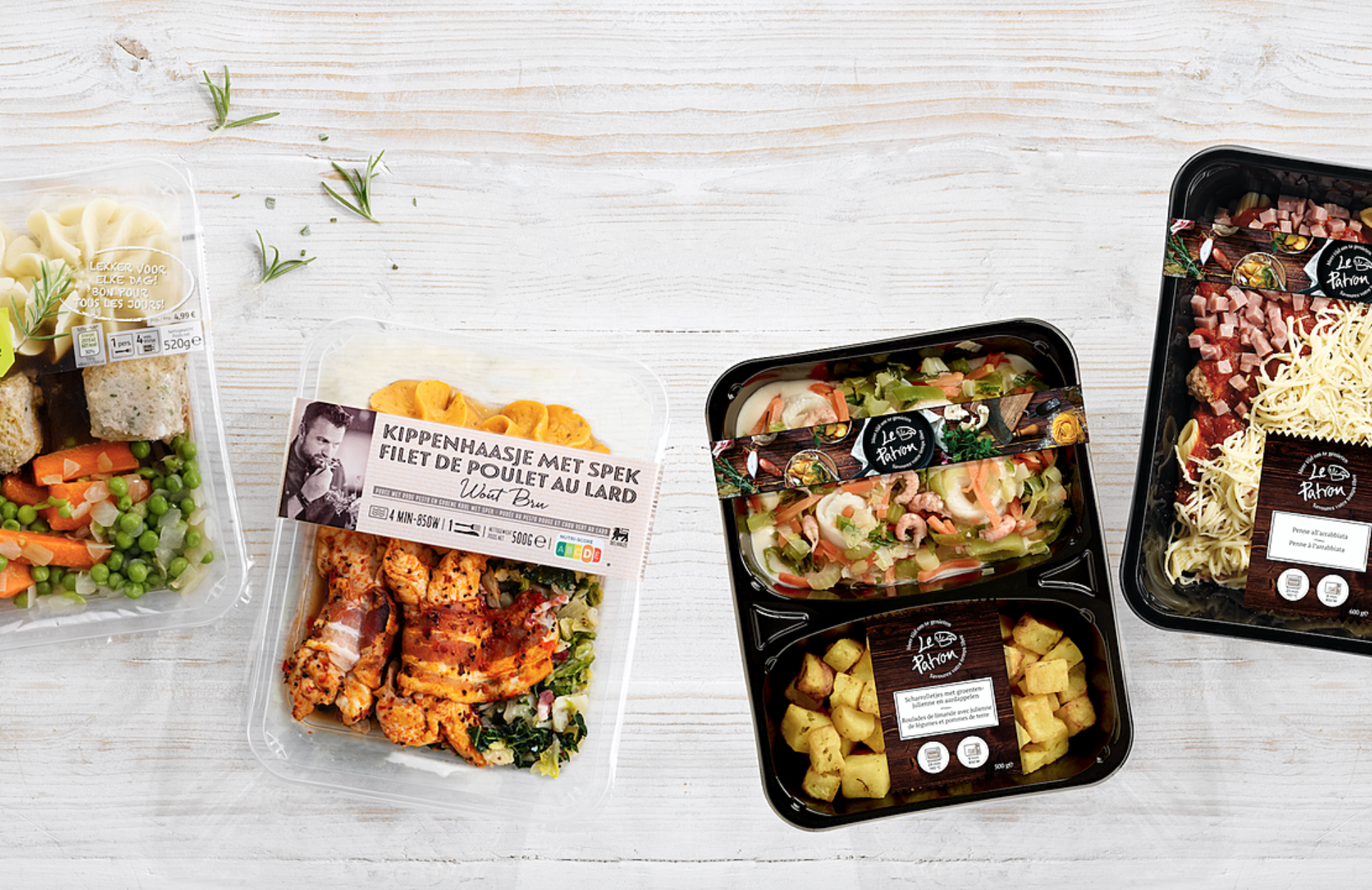Culinor
Processing industry
Culinor and Hot Cuisine a perfect match! - The choice falls on ‘LISA’ as collective ERP system
In acquisitions, it is often decided to implement the buyer’s ERP package in both companies. When Hot Cuisine was taken over by Culinor nv of Destelbergen they decided to compromise. Culinor kept ‘LISA ERP’ from Claerhout Computer Engineering which they were running, but adapted it to fit with Hot Cuisine’s ERP processes. This was a serious challenge for Claerhout Computer Engineering, but one with positive results for all ‘LISA’ users. Because after all, most of the expansions and optimisations that resulted from this project will be incorporated in the next version.

Culinor was established by Filip De Spiegeleire in 1987 as a specialist in prepared meals. Today, the product range includes six hundred items that are sold exclusively under private label. Hot Cuisine also specialises in the production of ready ade meals. Over the years, it has emerged as one of the most important specialists in sous-vide cuisine and meals by Michelin chefs. In November 2011, Culinor nv took over the company Hot Cuisine. This acquisition went hand in hand with the closure of Hot Cuisine’s branch in Doornik (its operations were transferred to Destelbergen). The new group has a total of 230 employees generating sales of 52 million euros last year.
‘LISA’ turns twelve
Until 2000, Culinor managed its administration, bookkeeping, purchasing/sales management and inventory using a number of non-integrated applications. Johan Tack, IT manager at Culinor: “In 2000, the management decided that the time was ripe to implement an ERP package. And in view of the good experiences that our neighbour Amando had with ‘LISA’, it seemed like a logical decision to get this package ourselves.” The bookkeeping module was activated first, gradually followed by the implementation of purchasing, sales, and production (over a period of four years). Johan Tack: “Once we had grasped all these functionalities, we looked at what extra bells and whistles would be useful to us. This led to the introduction of EDI for Delhaize and Carrefour in 2006. We also introduced EDI invoicing two years later. And we recently started on RF scanning on the work floor. And we had even more plans. But we were forced to adapt the path that we wanted to follow to fit with the acquisition of Hot Cuisine.”
The fact that the choice fell on the ‘LISA’ package from Claerhout Computer Engineering has everything to do with the flexibility and ease of use of the solution.
A ‘compromise’
Hot Cuisine had already been working with SAP for fifteen years with great satisfaction. But when the company was taken over by Culinor, the management decided to implement ‘LISA’ there as well. Evelin Rooms, Planning Manager van Culinor: “We had to choose one of the two packages because Culinor and Hot Cuisine became a single company in every way. This meant that we could not continue with both ‘LISA’ and SAP. The fact that the choice fell on the ‘LISA’ package from Claerhout Computer Engineering has everything to do with the flexibility and ease of use of the solution. Although SAP may be a very ingenious, high-performance system, it is not that easy to apply, less specific to a food company, and not as easily adaptable. It is also quite expensive to maintain, expand and upgrade.”
Adapted to existing processes
Still, Hot Cuisine didn’t want to simply switch to ‘LISA’. Evelin Rooms: “Because SAP had already been at the heart of the Hot Cuisine company for fifteen years, we were already very far along in terms of administrative automation and processes. We didn’t want to give up all the functionality of SAP or the work flow. That is why we opted for a compromise: we would only switch to ‘LISA ERP’ if Claerhout Computer Engineering was prepared to adapt ‘LISA’ to the existing processes.” Bart Van Beversluys, project leader at Claerhout Computer Engineering: “This was not a simple task for us, but it was a distinct opportunity to have Bart Van Beversluys, Evelin Rooms and Johan Tack‘LISA’ evolve further. That is why we didn’t hesitate to take on the challenge. And a challenge it was: not so much technically, but because we had to get the job done in only four months.”

Still some differences
Claerhout Computer Engineering started by making an analysis of the work processes at Hot Cuisine and of the way in which SAP kept them running smoothly. Key users were appointed for each module who explained all the details of how everything worked to the ERP producer. Bart Van Beversluys: “The major difference was in the method of signing out, registering and planning. In other words, the bookkeeping, invoicing and purchasing modules were quite similar to ‘LISA’ in terms of set-up and functionality. We primarily needed to work on the tracking & tracing, warehouse management, EDI and production modules. The article management was also set up differently than in ‘LISA’. Nevertheless, we were able to make the required modifications quite easily. In fact, each module was tested extensively. And together with Hot Cuisine, we succeeded in getting the job completely done in four months.”
Still tinkering with functionality
The nice thing about this story is that some of the optimizations will be included in the new release of ‘LISA’ (version 13 which will probably be launched this summer). Among other things, this concerns the CRP feature which is used to manage the customer’s inventory. Concretely, this means that ‘LISA’ checks the level of the customer’s inventory. If this falls below a certain minimum, the ERP package will automatically generate an order slip. Evelin Rooms: “We currently only use this functionality for Delhaize, which covers about 350 items. But we expect that other supermarkets will also opt for this logistics solution soon.” Of course, there is functionality that only applies to Culinor and Hot Cuisine, such as the transfers between the different locations. After all, there are now three production plants (Destelbergen, Ghent and a logistics centre Depot 52). Johan Tack: “We want to see where the goods are at every moment. That is why we have also introduced scanning: this makes it possible to determine whether the products are in a truck, or in a production or storage location. And this includes very extensive tracing so that we actually know the exact location of every product. We had actually wanted to implement this system at Culinor for a while, but this project was accelerated due to the takeover of Hot Cuisine. For that matter, we also want to further optimise production planning in the future.”
Enthusiastic users
In any case, the users are very enthusiastic about the chosen solution. Evelin Rooms: “LISA is a very user-friendly program that meets the specific requirements of our activities. We also find the application to be very flexible, which is of course a major plus point in an acquisition process. Because we are still very busy with the integration of both companies, which makes it important that the ERP package can take up all the changes quickly and efficiently. In this way, there is now a project to centralise all the ingredients for the three production companies in the depot, which will represent a complete change with regard to inventory management. Another major advantage is that LISA is very user-friendly, which means that our people have had little difficulty with the switch. But we are especially happy with how Claerhout Computer Engineering has approached everything. It is not a given that an ERP supplier will adapt their application to its customer’s work processes. In general, the exact opposite is true. A lot of praise is due to Claerhout Computer Engineering, who were willing to accept our request and successfully completed the project with flying colours!
Pictures Marc Masschelein
